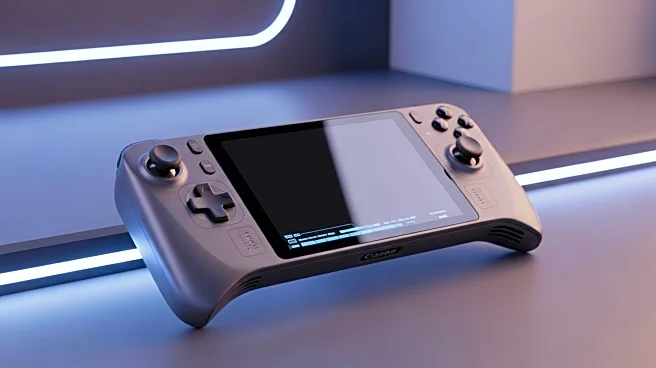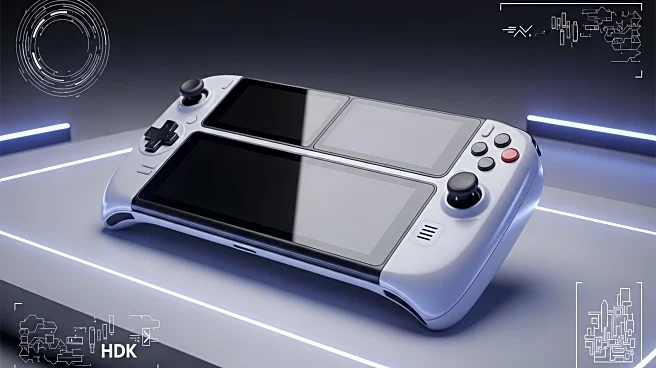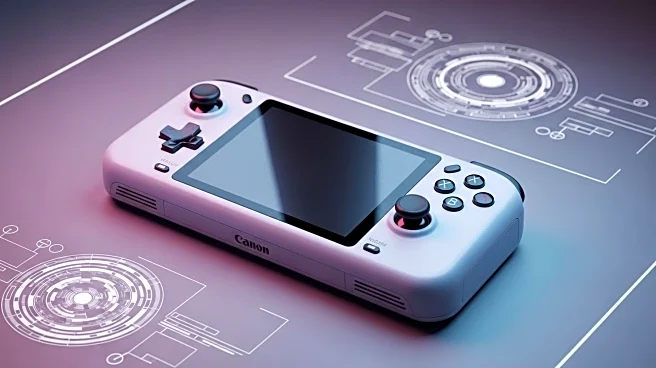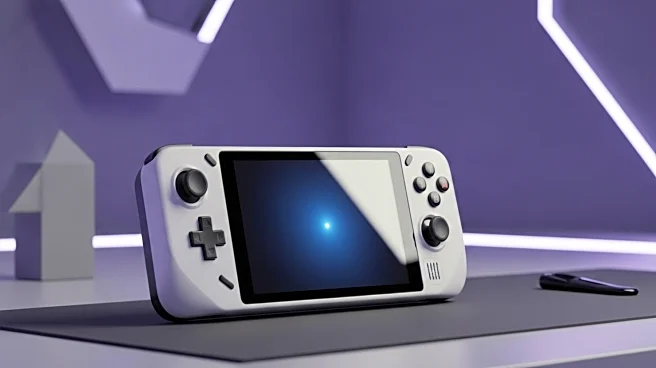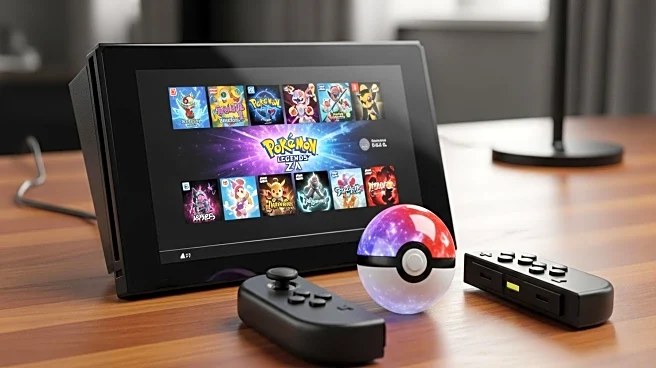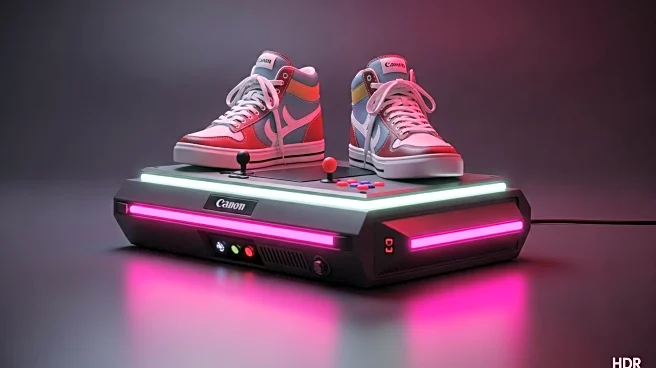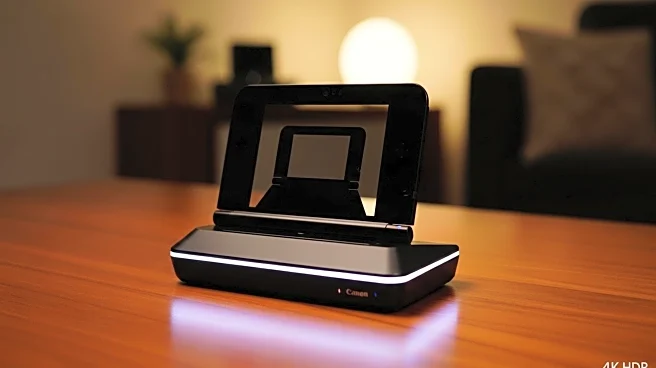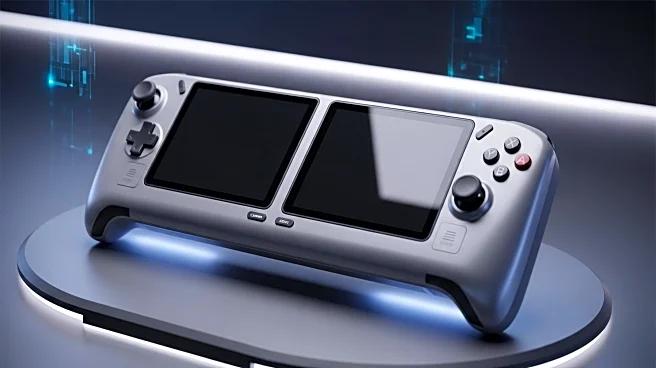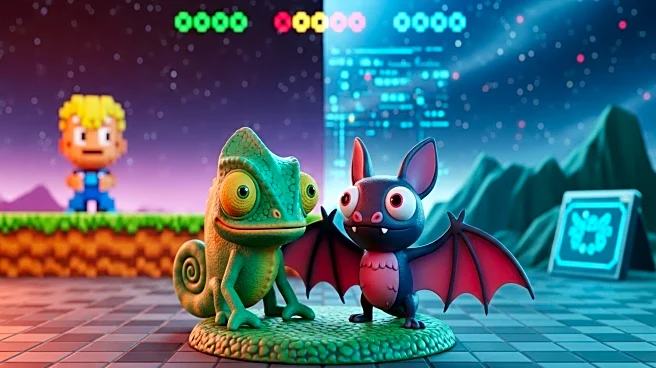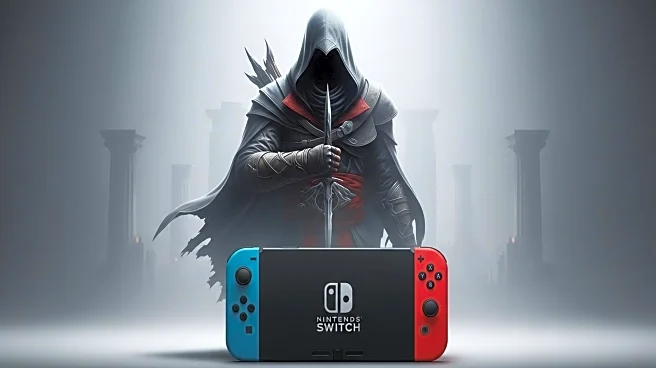What's Happening?
Anbernic has unveiled its latest dual-screen handheld device, the RG DS, which will be priced under $100. This announcement follows a teaser trailer released earlier, marking Anbernic's first foray into dual-screen clamshell designs. The RG DS will be available in four color options: Red, Turquoise, White, and Transparent. The device is expected to run on Android, possibly powered by the Unisoc T618 chip, although there is speculation about the use of the T820 chip. The design is reminiscent of the Nintendo DSi, featuring touchscreen and stylus support for the bottom screen. This move comes as Anbernic aims to capture the budget gaming market, offering a competitive alternative to other dual-screen devices set to launch this holiday season.
Why It's Important?
The introduction of the RG DS at a sub-$100 price point is significant for the handheld gaming market, particularly for budget-conscious consumers. Anbernic's strategy to offer a dual-screen device at this price could disrupt the market, providing an affordable option for gamers who might otherwise be priced out of more expensive models. This could lead to increased competition among manufacturers, potentially driving innovation and price reductions across the industry. Additionally, the RG DS's design and functionality could appeal to fans of retro gaming, further expanding Anbernic's consumer base.
What's Next?
As the holiday season approaches, Anbernic is likely to release more information about the RG DS, including detailed specifications and availability. The device's launch could prompt responses from competitors, such as AYN and AYANEO, who are also preparing to release dual-screen devices. The success of the RG DS could influence future product development strategies within the handheld gaming sector, encouraging other companies to explore budget-friendly options with similar features.
Beyond the Headlines
The RG DS's design, inspired by the Nintendo DSi, highlights the ongoing influence of classic gaming consoles on modern device development. This trend reflects a broader cultural nostalgia for retro gaming experiences, which continues to shape consumer preferences and industry offerings. The inclusion of touchscreen and stylus support also suggests a shift towards more interactive and versatile gaming experiences, potentially setting new standards for future handheld devices.
